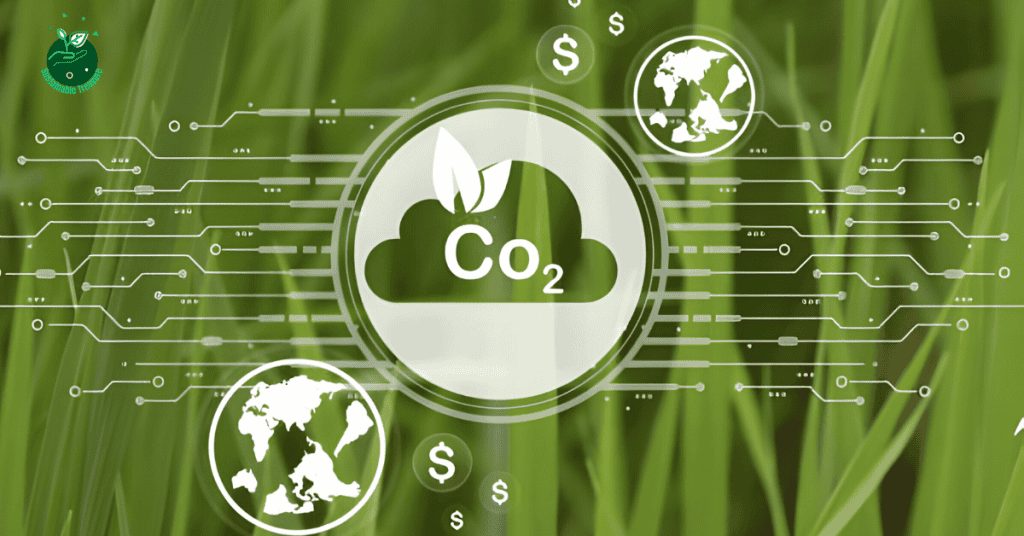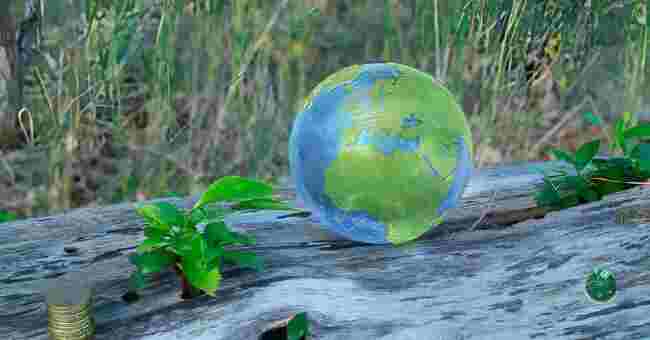Table of Contents
Did you want to know how does biodiversity contribute to the economy? Yes, Biodiversity provides immense yet often overlooked value by underpinning vital ecosystem services, supplying renewable natural capital to power growth across sectors, and enabling continued innovation through genetic diversity.
Having grown up in a rural farming community, I witnessed firsthand how cycles of pollinators, birds, soil organisms and plants supported agriculture and forestry central to local livelihoods.
Biodiversity truly serves as a free “natural infrastructure” that global economic activity relies upon. However, accelerating extinction rates now threaten this foundation.
In this article, I will clearly explain biodiversity’s economic contributions, quantify its staggering financial value, and show why businesses and governments worldwide must prioritize conservation to secure a prosperous, sustainable future.
Let’s go.
Overview
Biodiversity, or the incredible variety of life on our planet, provides immense economic value by supporting vital ecosystem services and underpinning entire industries.
As The World Bank notes, biodiversity is integral to key economic sectors such as agriculture, pharmaceuticals, forestry, and tourism.
Thriving natural systems essentially serve as infrastructure for the global economy by providing a constant stream of renewable resources, raw materials, and processes that fuel prosperity and development.
However, biodiversity loss poses a major risk to economic stability and future growth prospects. As The Nature Conservancy emphasizes, declining species and ecosystem degradation threaten to erode the natural benefits and capital that economies rely upon.
Safeguarding biodiversity is an investment in securing the production of food, clean water, medicines and sustaining sectors that employ millions across the world.
Biodiversity Provides Critical Ecosystem Services
Ecosystem services refer to the processes and outputs that natural systems provide which directly or indirectly support human survival, economies and quality of life. These include:
- Provisioning services:
- Food, fiber, timber
- Fresh water
- Medicinal and genetic resources
- Regulating services:
- Climate and disease regulation
- Water purification
- Pollination
- Pest control
- Supporting services:
- Soil health
- Nutrient cycling
- Photosynthesis
- Cultural services:
- Recreation
- Tourism
- Education
- Sense of heritage
The Millennium Ecosystem Assessment grouped ecosystem services into four categories as shown above. Without the regulating services that biodiversity provides, the growth of crops, timber and other renewable resources would decline rapidly.
Conservation of natural areas maintains healthy, functioning ecosystems. This directly powers economic activity by enabling continued production in agriculture, forestry, fisheries and other sectors.
| Type of Ecosystem Service | Economic Sectors Supported |
| Pollination | Agriculture, horticulture, crop production |
| Pest Control | Reduced costs for farmers, higher yields |
| Soil Fertility | Agriculture, forestry, livestock |
| Clean Air | Tourism, real estate, better health outcomes |
As an example, insect pollinators play a vital role in the production of 75% of globally important crops. The decline of pollinator species negatively impacts yields, farm incomes and food security. Investing in habitat protection to stem the loss of bees, butterflies and other pollinators has a direct economic payoff.
Similarly, natural coastal ecosystems such as mangroves protect against flooding and erosion. Conservation of these buffer zones avoids costly artificial flood barriers and reduces property damage, benefiting coastal economies.
In essence, biodiversity powers free environmental processes that economic progress relies upon. Its loss degrades the natural capital that underlies sectors employing hundreds of millions while regulating essential services.
Biodiversity as Infrastructure for Key Sectors

In addition to enabling vital ecosystem services, biodiversity serves as the very infrastructure and raw material for several major industries. Sectors like agriculture, forestry, fishing, tourism and biotechnology are built directly upon biodiversity and healthy ecosystems.
The diversity of plant and animal species is an irreplaceable resource that fuels innovation, productivity growth and offers comparative advantages to certain economic activities.
As the IUCN Red List details, over 30,000 species are currently threatened with extinction. This decline diminishes opportunities for trade, employment, research and sustainable growth across sectors:
Agriculture & Fisheries
- Over 7,000 livestock breeds are at risk as gene pools shrink
- Wild crop relatives are crucial for developing disease resistance
- Fisheries rely on maintaining thriving stocks and populations
Forestry
- High diversity forests draw ecotourism and support artisanal crafts
- Sustainably managed forests rely on genetic variation
- Deforestation and habitat loss harm species richness
Tourism
- Iconic wildlife and beautiful vistas attract visitors globally
- Marine biodiversity supports recreational diving industry
- Loss of charismatic species means decline in ecotourism rev
Biotechnology & Healthcare
- 70% of cancer drugs originate from natural compounds
- Anti-malarials, antibiotics derived from diverse species
- Genetic prospecting relies on breadth of flora and fauna
The infrastructure and free benefits supplied by nature fundamentally enable economic success across regions and industries.
As the UN Environment Programme underlines, the genetic library of biodiverse ecosystems serves as “the living foundation for new food products, medicines, and energy sources.” Preserving this natural capital secures future innovation potential and competitive advantages.
Natural & Biological Resources Powering Growth
The variation of genes, species and ecosystems also directly provides renewable physical inputs for consumption and production. Biodiversity supplies actual natural resources from timber to plant oils that power growth in major industries:
Forestry & Wood Products
The forestry sector contributed over $600 billion to global GDP in 2020, employing some 13.2 million people. This industry centrally relies on biodiverse and resilient forests for a sustainable supply of timber, pulp, biomass fuel and plant oils. Deforestation driven by agriculture, development and climate change degrades this vital economic resource.
Agriculture & Food Production
Diverse genetic crop varieties and animal breeds are crucial for global food security, valued at $1.3 trillion in world trade annually.
Wild crop relatives serve as breeding stock for improving yields and resilience. Livestock diversity also hedges against disease outbreaks. Continued agricultural growth requires protecting on-farm biodiversity.
Energy & Industrial Materials
Bioenergy and plant-derived materials offer renewable, lower carbon alternatives to fossil fuels and synthetic products. Biodiversity provides genetic resources for biofuels as well bio-based materials like bioplastics, rubber, fibers, dyes, and essential oils used in consumer goods.
Medicines & Biotechnology
The genetic variety found in plants, animals and microrganisms offers a wealth of health applications from traditional herbal remedies to billion-dollar blockbuster drugs. Bioprospecting natural compounds enables advances in pharmacology but depends on conserving biodiversity hotspots and catalogueing traditional ecological knowledge before it disappears.
In essence, the web of life supplies tangible raw inputs that sustain economic processes and offer alternatives to depleted resources. However, the overexploitation and degradation of nature now threatens these material contributions. As the World Bank stresses, preserving diverse ecosystems preserves options for cost-effective and renewable solutions over the long term.
Valuing Nature: Conservation and Natural Capital
Despite underpinning entire industries and the global economy, biodiversity’s total value is often excluded from economic metrics, planning and policy decisions. This leads to the erosion of natural capital from forests to reefs for short term gains. Emerging techniques aim to account for biodiversity’s hidden contributions:
Natural Capital Accounting
An extension of conventional national accounting, natural capital accounting quantifies the value of ecosystem goods and services within economic calculations. This method captures biodiversity’s financial contributions to sectors from agriculture and forestry to recreation and real estate. Over 70 countries now implement some form natural capital accounting.
Payments for Ecosystem Services
Payments for ecosystem services (PES) compensate landowners or communities for stewarding natural resources that benefit society, such as watershed conservation or carbon storage. Costa Rica’s pioneering PES program covers over 1 million hectares of rainforest. These programs value biodiversity’s contributions explicitly within markets and incentives.
Biodiversity Financing and Offsets
Banks, insurers and regulators increasingly integrate biodiversity into financial decision making via lending requirements, risk models and disclosure standards. Developers also offset harm from projects by funding conservation of equivalent natural capital elsewhere through biodiversity banking.
Accounting for nature’s benefits encourages investments in protection and sustainable use as opposed to short-sighted depletion. Both public and private sectors have a role to play in valuing biodiversity. As the Convention on Biological Diversity states, “the economy is a wholly-owned subsidiary of the environment.”
Mainstreaming Biodiversity Across the Global Economy
Integrating biodiversity considerations across sectors represents the next horizon for sustainable economic development. Also termed mainstreaming, this approach makes conservation an integral part of policy planning from agriculture to urban growth:
Sustainable Production Standards & Certification
Voluntary standards for commodities like palm oil, soy, wood products and seafood promote biodiversity-friendly practices across supply chains. Certifications allow producers to charge price premiums while meeting rising eco-demand.
Incentives for Biodiversity Stewardship
Fiscal instruments like tax breaks, credit access and subsidies encourage landowners and companies to adopt less intensive production methods that conserve habitats and species. Such incentives enable sustainable growth.
Natrual Infrastructure Investments
Green infrastructure projects restore wetlands, forests, barrier reefs and other ecosystems that provide economic services like flood control, water filtration and soil health. Every $1 spent can yield $20 in benefits by limiting damages and boosting productivity.
Mainstreaming also entails ending billions in annual subsidies that drive overfishing, excessive use of agrochemicals and the clearance of high biodiversity areas. Tackling harmful incentives along with proactive measures offers policy coherence.
FAQs

Why Is Biodiversity Important For The Economy?
Biodiversity, or the variety of genes, species, and ecosystems on Earth, provides immense economic value. Thriving natural systems support sectors employing hundreds of millions through ecosystem services, raw materials, and genetic resources. Key biodiversity contributions to the economy include:
- Pollination underpinning $577 billion in annual crop production
- Fisheries and forestry relying on resilient ecosystems
- Flood control from wetlands avoiding billions in damages
- Tourism depending on vibrant reefs, wildlife and forests
- Crop diversity providing traits to adapt yields to conditions
- Genetic prospecting enabling medical breakthroughs
In essence, biodiversity provides free “natural infrastructure” that enables economic success. Its loss poses a huge risk to continued prosperity. Protecting nature is an investment in future productivity and innovation across sectors.
How Does Biodiversity Contribute?
Biodiversity powers the global economy in two central ways – by supplying irreplaceable ecosystem services and serving as natural capital itself:
Ecosystem Services:
Processes like soil nutrient cycling, pollination, pest control and water regulation that biodiversity underpins, enabling sectors to thrive at low or no cost.
Natural Capital:
The provisioning of actual physical, consumable resources from forests to fisheries to genetic material that serve as inputs and raw materials driving growth across industries.
Diverse ecosystems provide society, renewable resources, a stable climate suitable for habitation and landscapes that support major economic activities. Preserving biodiversity preserves the means for continued innovation and sustainable development.
How Does Biodiversity Affect The Stability Of An Economy?
Biodiversity supports economic stability in several key ways:
- Maintaining consistent supply availability – Sectors depend on reliable provisioning of varied genetic material, species and ecosystem processes to avoid disruptions.
- Providing backup options – Greater diversity offers optionality in case particular species decline due to overuse or disease.
- Increasing resilience to shocks – More diverse ecosystems tend to be healthier and adaptable in the face of stresses like drought or temperature shifts.
- Supporting recovery post-disasters – Highly biodiverse areas better enable sectors to rebound after floods, fires or pest outbreaks, restoring productivity.
Declining diversity and species extinction cuts off potential sources of economic value and destabilizes sectors by eroding redundancy and system resilience.
What Are The Economic Examples Of Biodiversity?
Everyday examples that demonstrate biodiversity’s economic usefulness include:
- Wild crop relatives that enable breeders to develop higher yielding or drought-resistant varieties
- Yew trees that provided treatments for cancer worth billions
- Colorful birds and coral reefs that attract recreational ecotourism
- Mangroves protecting coastal areas from storm surges and flooding
- Dung beetles contributing billions in fertilizer value yearly
- Fungi and bacteria enabling bioremediation to filter waste or oil spills
This small sample highlights biodiversity’s contributions across healthcare, agriculture, disaster risk reduction, tourism and more. Preserving diversity preserves options for sustainable prosperity.
What Is The Direct Economic Value Of Biodiversity?
The direct economic value of biodiversity refers to the consumable, physical products it provides as natural capital inputs driving growth across industries. This includes:
- Food from crops, livestock, fisheries and game
- Wood products like timber, fiber and fuel
- Materials such as rubber, oils, resins, and dyes
- Ornamental plants and breeds for horticulture
- Energy sources ranging from biomass to biofuels
- Genetic material for medical compounds or crop traits
The genetic library found globally essentially serves as “open-source” IP freely powering innovations in healthcare, agriculture, alternative energy, and more. However, misuse threatens these contributions.
What Is The Main Direct Economic Value Of Biodiversity?
The foremost way biodiversity directly propels economic expansion is by supplying renewable, physical consumables across sectors:
- In agriculture, a wealth of genetic diversity in crops and livestock enables continued innovation to boost yields and address consumer demand
- In forestry, timber, wood pulp, fibers, oils and other products worth hundreds of billions originate from well managed, high biodiversity forests
- In fisheries, maintaining thriving, resilient marine and freshwater ecosystems preserves future seafood supply and livelihoods
- In emerging fields like bioplastics or biomaterials, biodiversity offers green, lower footprint alternatives to traditional manufacturing inputs
In essence, biodiversity provides the actual biological building blocks driving innovation and production worldwide. Its conservation guarantees future access to these sustainable, cost-effective resources.
What 3 Things Contribute To Biodiversity?
The three central pillars that support balance across global ecosystems and maximize species diversity are:
- Genes – The distinct genetic variation within species allows adaptation and continued evolution.
- Species – The richness of distinct species filling ecological niches in an ecosystem.
- Ecosystems – The variety of habitat types from reefs to tropical forests that enable specialization.
Protecting diversity at the genetic, species and ecosystem levels maintains ecological health and productive potential to support economic activity.
What Are 4 Reasons Why Biodiversity Is Important?
Four core reasons biodiversity holds immense economic and social value include:
- Provides vital ecosystem services – soil fertility, clean water and air, pollination etc. that sectors depend upon.
- Powers innovation as natural capital inputs – food, fiber, genes for products.
- Enables sector productivity and competitiveness – via resilient agrobiodiversity, ecotourism potential etc.
- Offers resilience to shocks like climate change that protects industries over the long term.
How Does Biodiversity Contribute To Stability?
As detailed earlier, biodiversity lends stability to economies and sectors through:
- Maintaining consistency in the supply of renewable provisioning services and natural capital over time
- Providing backup options if particular species decline
- Bolstering ecosystem resilience against short term shocks and long term shifts via higher adaptability
- Supporting post-disaster recovery across economic activities reliant on natural systems
Which Is An Example Of The Indirect Economic Value Of Biodiversity?
While direct value comes from consumables that biodiversity provides, one example of indirect economic value is through recreation and tourism.
Visitors who come to experience vibrant coral reefs, diverse wildlife on safari tours, or hike through majestic redwood forests generate billions through lodging, transport, food and souvenirs – supporting livelihoods worldwide.
Though no physical product originates from natural landscapes, their beauty and diversity enables associated downstream revenues. Preserving iconic habitats and species maintains destinations’ tourism income potential.
Conclusion
In summary, biodiversity and vibrant ecosystems are integral to economic success – enabling sectors, powering growth and supporting livelihoods globally.
However, the escalating extinction crisis coupled with climate change now threatens to undermine natural systems and processes that economies rely upon.
Quantifying and integrating nature’s immense value into decisions across public and private sectors can secure biodiversity’s immeasurable contributions.
Sustaining the global economy over the long term requires prioritizing conservation to safeguard our natural infrastructure and biological capital.



